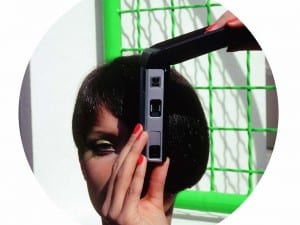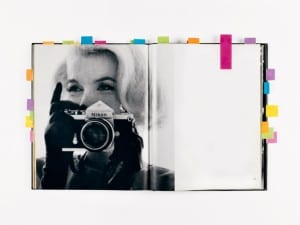Evidence for climate change is overwhelming, from shrinking ice sheets to rising temperatures. Desert X places art at the centre of these discussions.
“Desert X provides a roadmap,” says Neville Wakefield, Artistic Director. From Jim Morrison to Burning Man Festival, people have visited the desert to discover themselves as much as the place. This is a fact that Wakefield and his team have fully embraced. It is the basis for a groundbreaking programme, which shines a light on climate change at a time when action is most needed. The free event is organised in the Coachella Valley, tapping into the visual allure of brilliant blue skylines whilst encouraging audiences to take notice of the near-irreversible damage that has been placed on the environment.
Based just 90 minutes outside Los Angeles, Desert X is held every other year thanks to Desert Biennial – a not-for-profit organisation. Since launching in 2017, it has accrued an international reputation for breaking the traditional gallery mould, offering provocative exhibitions that change the face of non-commercial art events through a mix of “natural wonders and attention to socio-political issues.” This year is no different: over 18 public installations rise from the sand as powerful metaphors, urging viewers to respond. From VR and film screenings to mountainside sculptures, the projects create a map rather than a white cube space – immersing viewers completely and refocusing their attention to nature.
Desert X is an initiative. It is rooted in the idea that geography has the potential to be transformed and, in return, alter people’s perspectives. Wakefield explains: “I’m interested in the way that art behaves outside institutional bounds and how a place can become generative.” Wakefield is no stranger to new, speculative types of exhibition design and has established himself as somewhat of an authority on this brand of al fresco viewing. He has an impressive curatorial background with MoMA PS1 as well as Frieze. In 2014 he also co-founded Elevation 1049 – a festival in Gstaad, Switzerland, which brings large-scale constructions to the snow-covered Alps, providing a viewing platform that is just as much about braving and exploring the harsh terrain as it is about confronting new constructions. The event draws many parallels to Desert X – having welcomed many of the same projects such as Doug Aitken’s Mirage – a mirrored ranch-style structure that both absorbs and reflects the landscape, seemingly disappearing into the background. It is a kaleidoscope of light – a framing device between dream and reality.
In Wakefield’s site-specific exhibitions, audiences are part of a one-of-a-kind experience; their interpretation of any given piece is easily adjusted by where they are standing, or even the weather. “In gallery curation, you know the outcome before you begin,” he states. “In these situations, you don’t have that. The location – through its social, historical and political contexts – becomes the mediator, and the space surrounding the works is just as important. It’s a non-prescriptive show and you can come in at whatever angle you want. It’s about how the viewer shapes their own experience.”
For the 2019 edition of Desert X, the team has assembled an extraordinary roster of international talents that include Pia Camil, Mary Kelly, Gary Simmons, Postcommodity and Julian Hoeber, amongst others. This collection spans a 50-mile stretch of arid land along the California–Mexico border and, for the first time, also includes several nautical elements. A number of pieces have been conceived specifically for the Salton Sea – a shallow lake in the valley. The common thread that weaves through the artworks – executed in a variety of mediums – is an intention for ecology to take centre-stage. Each of the projects reaches out to the viewer with deeply ingrained messages about the Earth’s precarious situation.
Irish artist John Gerrard provides one such work. Western Flag is positioned at the entry-point of Palm Springs. It is a deeply important structure that recreates scenes from Lucas Gusher – considered the world’s first major oil find – in Spindletop, Texas. On 10 January 1901, the gusher blew for nine days, spilling out roughly 100,000 barrels of oil per day. This unprecedented quantity sparked a complete change in production, moving humanity into the age of mass combustion. In response to such a colossal moment in history, Gerrard has superimposed a flagpole emitting smoky black gas – representing carbon monoxide – onto footage of the oil site, inviting viewers to confront the very real consequences of exploiting fossil fuels. (On their website page for climate change, NASA states that the planet’s average surface temperature has risen by 1.62 degrees Farenheit since the late 19th century due to the effects of manmade emissions.)
In a similar vein, Danish art collective Superflex – whose members include Bjørnstjerne Christiansen, Jakob Fenger and Rasmus Nielsen – has built a home for future marine life that will inhabit the land once sea levels rise even more dramatically. (NASA’s research says that oceans have risen eight inches in the last century.) Shaped like a castle from a fish tank, Superflex’s Pepto-pink structure, titled Dive In, forecasts a drastically altered landscape in the valley’s not-so-distant future. Meanwhile, Nancy Baker Cahill tackles this topic through two contributions: Revolutions and Margin of Error. In both submissions, Cahill draws upon Augmented Reality to provoke unique encounters. Revolutions is located at a wind farm in the northernmost part of the valley. Turbines have been remodelled into vibrant and explosive animations that foreground sustainable energy practices as an undeniable route for the future. The work calls upon the viewer to download a “4th Wall app” onto their phones to reveal a multitude of fluctuating geometric forms, becoming an active participant in creating a sky filled with clean energy.
Kathleen Ryan also comments on the fragility of nature. Ghost Palm reconstructs a group of Desert Fan Palms – the largest species native to California – using manmade materials such as steel, plastic and glass. These pseudo-palms have windowpanes for a trunk and mid-century modern chandeliers that represent the skirt of the tree. Clear plastic leaves stand in for real ones. These manufactured trees stand face-to-face with a cluster of actual Washingtonia filifera – a confrontation between organic and artificial worlds.
Though this year marks only the second edition of the biennial, it has already been established as a must-visit destination. In 2017, it welcomed more than 200,000 attendees, and a search of the hashtag #desertx turns up more than 50,000 hits on Instagram. In describing this presentation, it becomes near impossible, then, to omit the role that digital feeds have played in its success. The show’s larger-than-life constructions and awe-inspiring backdrop make it Instagram candy. For its first edition, the organisers – due to time constraints – eschewed a traditional media roll-out and relied on social sites to spread key exhibition messaging. This tactic proved tremendously fruitful and, as Wakefield recalls, it was “far more effective than any PR strategy we could have had.”
What is the upside of allowing online platforms to do the heavy lifting with regard to communication? Social media, namely Instagram, enables the event’s imagery and information to reach new and diverse audiences, thereby making the biennial – and contemporary art as a whole – accessible to a wider range of viewers. “We’ve got people coming who never would have visited a gallery – even one as transient as this.” Despite its power and irrefutable effectiveness in disseminating fundamental content to a broader audience, Wakefield concedes that there is a downside to events that are as digitally-friendly as this one: “You get a trophy-hunting experience.” He elaborates: “The artwork is really trying to slow you down, to draw you in. But social media isn’t about deceleration. Rather, it’s all about collecting the image and it favours only the most photogenic pieces, like Aitken’s Mirage, not those that require a more gradual type of attention.”
To get the most out of a visit, Wakefield asks visitors to spend time with all of the pieces, not exclusively those that have featured prominently on social media. Two of his favourite constructions don’t get a lot of play on digital platforms, despite being deserving of the attention for their conceptual complexity. The first example, Shybot, is still roaming the sands from the first edition. Created by Norma Jean – an anonymous artist who does not wish to be identified – the autonomous rover is programmed to avoid human contact, opting for total physical absence. “There weren’t even any images of it because the piece was made to stay away from photographers,” comments Wakefield. The little six-wheeled bot was so adept at this anti-social behaviour that it actually became lost for a staggering 16 months. (The biennial team was so hard-up for clues on its whereabouts that they even posted a $1,000 reward for anyone who could help track the curious Shybot down.) It was later recovered by a maintenance worker in July of 2018. “Though it has no visual elements per se, it has all of the meaningful beauty of what a desert piece should be because it’s a metaphor for the whole experience. We come to these types of landscapes to look for something, but we don’t necessarily find it.”
Another highlight is Cynthia Marcelle’s Wormhole, a secret trapdoor to empty shops and temporarily disabled establishments in both California and Mexico. A meditation on opportunity, loss and abandonment, it features a derelict storefront. Through the windows, viewers can gaze at television monitors broadcasting images of other similarly distressed businesses. “Despite being hard to capture, this endless loop is incredibly poetic – it’s about the border between Mexico and the USA and the social divides in-between,” he remarks. In a similar way, Pia Camil’s Lover’s Rainbow ties into the creation of connections from point A to point B. Building on the symbolism of rainbows to establish hope and inclusivity, the structure bends from the sky to the sand. In doing so, it sheds light onto current immigration policies – with the link to Trump’s proposed wall being undeniable – prompting viewers to look from both planes of sight and consider the empty space which sits underneath the bow.
Ultimately, the public’s appetite – both on social media and in person – for this festival marks a shift in our collective interest from commercial viewing outlets to less prescriptive, more responsive exhibitions. “These installations exist outside of parameters – just as anti-institutional American Land Art did. After all, the greatest form of ownership is through experience, and that’s what people get here.”
Stephanie Strasnick
Desert X, until 21 April. Coachella Valley, CA. www.desertx.org










